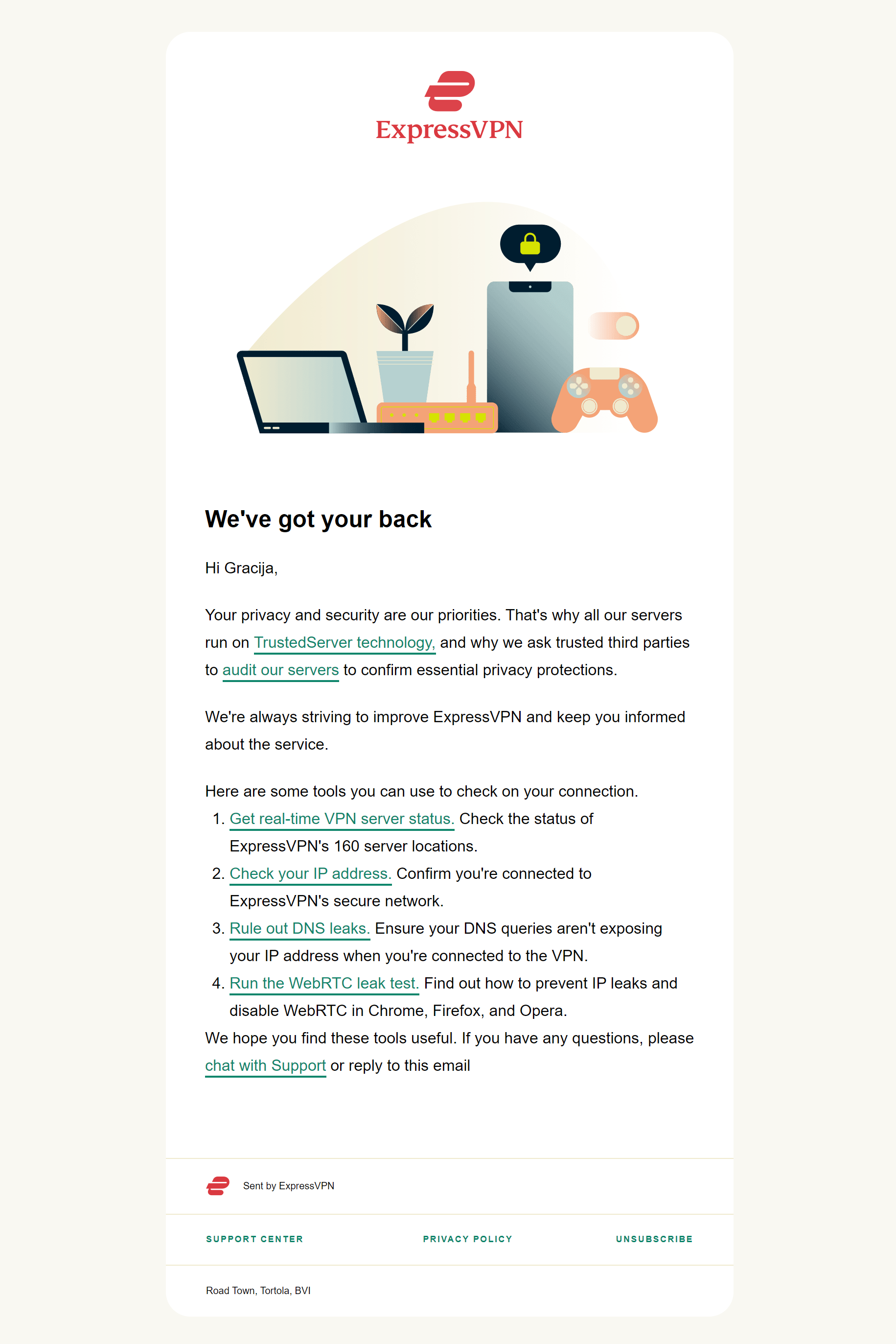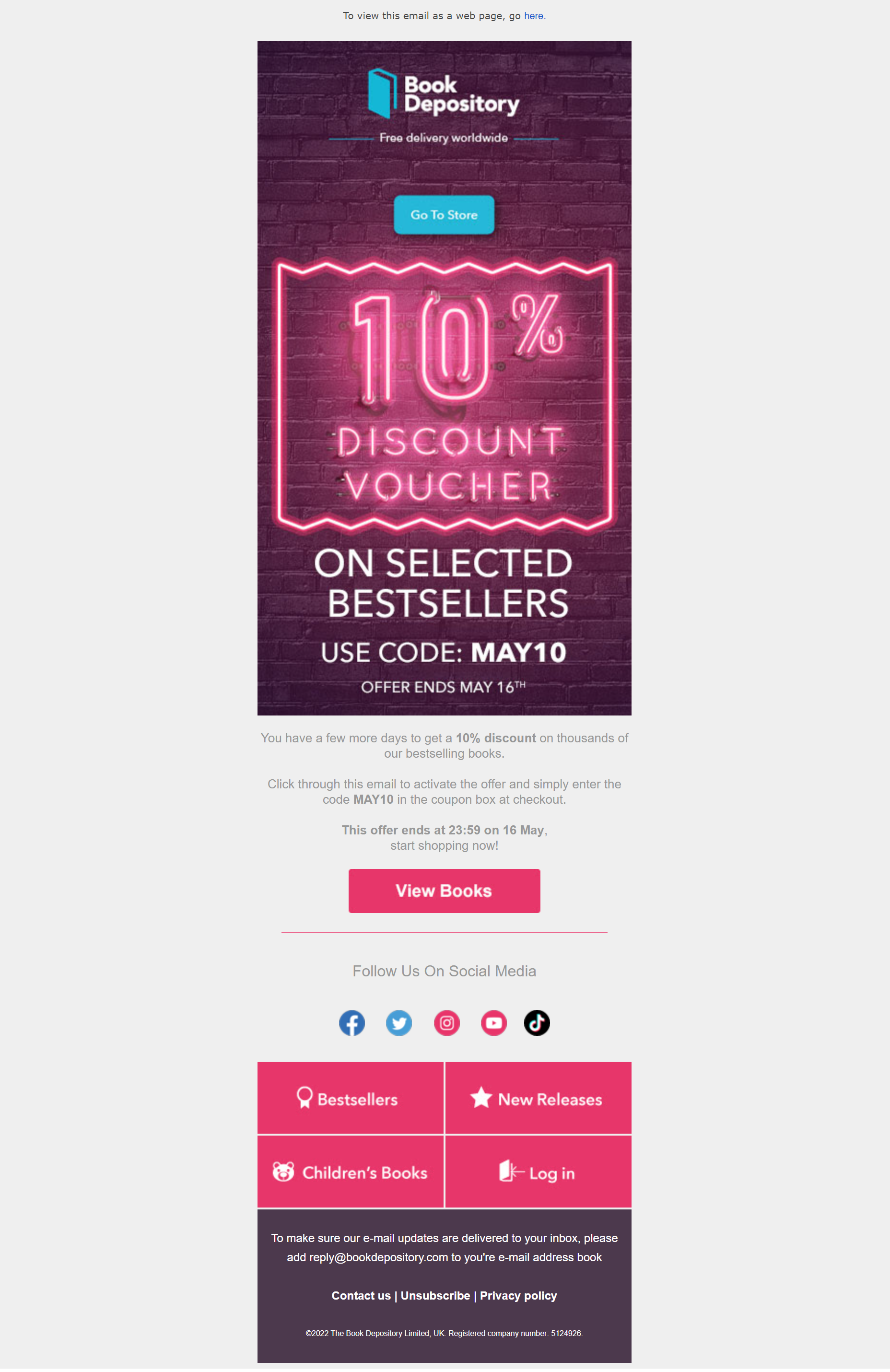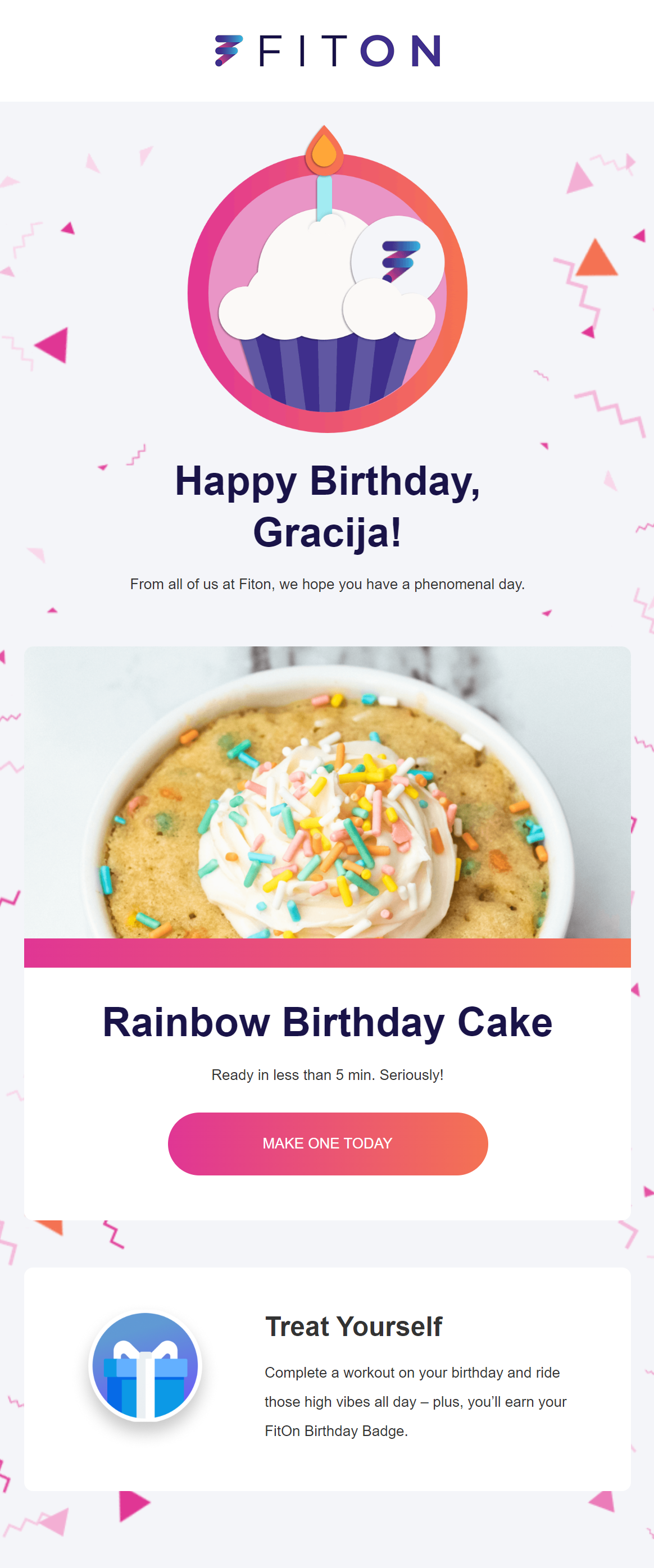Growing your email lists and chasing after new customers is super important in email marketing, but so is keeping the subscribers who are already on your list.
A statistic from Marketing Chart says that about half of your subscribers will churn after a year of being on your subscription list. And that’s a lot of subscribers, folks!
Now, one type of churn, called “transparent churn”, is pretty easy to track because it involves tracking the people who are unsubscribing from your lists. “Opaque churn”, on the other hand, is much harder to track since it involves tracking those who stop engaging with your emails while still being subscribed to your service.
The good news is that re-engagement emails can help with the latter by incentivizing your subscribers to start engaging with your emails once again. Re-engagement emails can also help you clean your email lists more effectively and remove subscribers who refuse to engage, even after continuous efforts.
Now that you know how valuable re-engagement emails are let’s give you the 101 on re-engagement emails and show you how to use them to your advantage.
TLDR: Gaining and retaining customers doesn’t end once they subscribe. That is just the beginning. Prevent the increase of churn rates with these re-engagement tips and templates.
What Are Re-Engagement Emails?
Just like the name suggests, re-engagement emails are designed to nudge subscribers into engaging with your emails again, which entails opening them, reading the content, maybe clicking on a CTA button, or taking other actions.
To create an effective re-engagement email campaign, however, you first have to know some of the reasons why your subscribers have zoned out in the first place. Let’s go over some of the most common reasons why this could be.
-
You send too many emails;
-
Your subscribers are not interested in the email’s content;
-
You send emails with clickbait subject lines;
-
The design of your emails is too confusing;
-
The inboxes of your subscribers are full;
-
Your emails aren’t responsive (not optimized for mobile devices or tablets);
-
You subscribers only signed up for a limited-time offer;
-
Your subscribers are too busy even though they are interested in your brand.
Pinpointing what is causing the lack of engagement can help determine what you can do to get them back in the fold.
Questions Concerning the Timing of Re-Engagement Emails
Before I cross over to the more practical part of this article - namely, to give you some tips on how to craft the best re-engagement emails and review some examples - I want to answer two fundamental questions concerning the timing of re-engagement emails.
How Long Should You Wait Before You Send Subscribers a Re-Engament Email?
Generally speaking, an ideal waiting period would be anywhere between 30-60 days of subscription, but you could also go up to 90 days.
How Many Emails Should You Send Before Cleaning Your List From Unengaged Contacts?
A re-engagement campaign usually involves several re-engagement emails. Several emails allow you to show your customers why it’s worth it for them to come back. Typically, you’d want to send 3, 4, or more (but not too many!) emails before you cross subscribers off your list.
What you need to remember about each email sequence is that it should contain one specific message that will try to win them back, whether it’s just a nudge or an incentive. Don’t overburden each email with too many ideas, or you risk confusing your subscribers. For example, don’t offer a subscription discount, flash sales, or free content in the same email because the subscriber won’t know what to do first. That’s where the email sequence comes into play. It gives you space to try your options without overwhelming your subscribers.
Email Re-Engagement Tips: How to Easily Make the Best Re-Engagement Emails
Crafting a good re-engagement email is a matter of skill, and I’m sure these five tips will help you ensure your next campaign is up to snuff.
1. Personalize the Emails You Send
Personalization has come a long way in email marketing, so it’s not enough to use the first name of your subscribers in the subject line and in the body of the email anymore. You also need to find out their interests and other personal data (like location and age, gender, purchase history, and what specifically interests them in your products) and use that information to craft the perfect message.
When it comes to email personalization, It’s important to define your goals. Because, in this case, you have the re-engagement goal in mind, you need to ask the right questions. You can, for example, ask your subscribers to update their preferences.
Moreover, don’t forget to use the righ language and adjust the tone, copy, and visuals based on the target group you’re addressing. For example, you can’t send a formal email to a target group of teenagers, just as you can’t send an email akin to an SMS to highbrow clients. Make the copy clear, focused, and catered to the specific interests of your clients.
2. Practice List Segmentation
This is important for different parts of your marketing campaign, and the same goes for email re-engagement. Create different lists for different types of inactive subscribers to create more effective re-engagement emails and adjust the copy accordingly.
Here are some examples:
- Subscribers who open the emails but don’t engage with the content
- Inactive subscribers who used to engage with the emails but do not anymore
- Inactive subscribers who made a purchase a while ago
- New subscribers
3. Use the “Emotions” Card
Using emotional triggers is nothing new in email marketing, given that most consumers have emotion-based responses. So, using emotions like excitement, curiosity, anticipation, fear of missing out (FOMO), and others is a great way to connect with your subscribers and pique their interest in what you offer or have to say. When done right and combined with the right images, CTA buttons, and other elements, it can have a great impact and encourage your subscribers to take action.
This, again, means speaking your customers’ language. Give them the freshness of today’s looks and slang if they’re life-hungry teenagers looking to impress their peers, or the excitement and adventure of sports and outdoors if they’re athletes or sporty people.
4. Offer an Incentive
Depending on the types of products or services you offer, this can be a free upgrade, a discount on an item or a subscription, or a chance to participate in a giveaway. People like to be lured in by free stuff and discounts. You can even throw a limited-time offer if you want, which brings us to the next point.### 5. Remind Them of the Reason(s) They Signed Up for Your Services in the First Place You can remind your subscribers of the reasons they signed up for your service in the first place by emphasizing how you can help them solve a particular issue or develop their skills. Be precise and offer a concrete solution.
5. Use FOMO to Your Advantage
FOMO, or fear of missing out, is an effective strategy to convince subscribers and customers that yes, now is indeed the time to buy this product or use this service or take advantage of this offer.
You can use FOMO in any number of ways. Limited-time offers are one way you could go about it - an email campaign where you offer free shipping for a certain time (let’s say two weeks), a 24-hour or 48-hour offer, limited supply offers, holiday offers, etc. You can also give your customers back-in-stock notices, offer flash sales, provide user reviews and testimonials, and use influencer marketing.
6. Remind Them of the Reason(s) They Signed Up for Your Services in the First Place
You can remind your subscribers of the reasons they signed up for your service in the first place by emphasizing how you can help them solve a particular issue or develop their skills.
Send them an email that asks how they’re doing with the service they’re using and if they need any expert help. Then provide them with appropriate tools and guides for that particular issue. Don’t make the email too long. Be precise and offer a concrete solution.
Also, don’t shy away from reminding them why they got the product or signed up for the service in the first place. Show them all the ways it can help them build their project or get to where they want to be.
7. Keep It Simple and Short
Brevity is the soul of wit - you might remember this from English class as one of Shakespeare’s genius lines. It applies equally well from literary theory to email marketing. With more than 300 billion emails being sent per day, brevity is certainly something to cling onto when you want to re-engage your customers. Nobody wants to see a huge block of text waiting for them in their inbox, even if it gives them free stuff. How can they get to that part if you surround it with unnecessary fluff?
So, stick to short, simple sentences that are super relevant to what you’re trying to say to your subscribers. Cut straight to the chase. Be informative and concise. Use headings, bullet lists, and the power of links if there’s a lot of info you want to convey.
8. Give Your Readers Options
Sometimes it’s okay to let subscribers go. The important thing is for them to feel like they have options. Of course, this doesn’t mean only the unsubscribe button, which, by the way, you should always provide. It also means something different from what you’re currently offering. A different service or product, fewer emails, less or more text/information, etc.
Customers and subscribers often change their interests and needs. Sometimes whatever you’re offering just doesn’t fit their budget or their lifestyle anymore. Some examples of this would be single women who became mothers and wives, students who got employed, workers who got retired, and so on. Find out what the matter is and answer accordingly.
9. Run an A/B test
A/B tests can help you try out which versions of your email work best for re-engaging customers. Because you’re most likely going to segment your audience, these tests will tell you which emails work best with which audiences.
A/B tests also allow you to see how effective other components of your email are, such as the copy, the subject line, the word order, and any kind of visuals you may use (like images, gifs, or videos). You can also test out the best design for your emails, the tone of your emails, and what kind of CTA button works best.
A Simple Template To Start Your Re-Engagement Emails
The inventor of this simple re-engagement template (which he calls the Starbucks Test) is Dean Jackson, an online marketer and a very successful entrepreneur in the field of real estate.
The subject line should only have their first name. So, for example:
Subject line: John
Email body:
“Hi John,
Are you still looking for __ (insert here whatever you do or offer)?”
And this is where the template ends. It’s pretty simple. You can write:
-
“Are you still looking for ways to increase your open rates?”
-
“Are you still looking for a good deal on sunglasses for the summer?”
-
“Are you still interested in improving your online security?”
It can be anything! This is just an idea to start the re-engagement email, so follow our tips above to craft the rest of the message. To inspire you, let’s see some examples.
Re-Engagement Email Examples
I’m subscribed to some services, and naturally, I receive re-engagement emails. Let’s go over three re-engagement email examples from different service industries and companies I received in the past few months.
ExpressVPN
 This is a good re-engagement email because it’s informative for first-time users of the service, but it’s not overwhelming. It gives you specific things you can do with your VPN subscription and reminds you why you subscribed in the first place.
This is a good re-engagement email because it’s informative for first-time users of the service, but it’s not overwhelming. It gives you specific things you can do with your VPN subscription and reminds you why you subscribed in the first place.
Book Depository
 This online book-selling company cuts straight to the chase and offers you some bait - a nice 10% discount on bestsellers!
This online book-selling company cuts straight to the chase and offers you some bait - a nice 10% discount on bestsellers!
FitOn
 This is a personalized email body in which the company celebrates your birthday, gives you a free recipe for making a treat, and reminds you to “treat yourself” by using their services and earn their “Birthday Badge”.
This is a personalized email body in which the company celebrates your birthday, gives you a free recipe for making a treat, and reminds you to “treat yourself” by using their services and earn their “Birthday Badge”.
Conclusion
In the world of email marketing, re-engagement campaigns are truly a valuable tool to have at your disposal. Don’t be afraid to experiment with your campaigns, as long as you keep them personalized, relevant, and in tune with your brand's image.
Enjoyed this article?
Get more email marketing tips delivered to your inbox. Join 4,000+ marketers.
No spam, unsubscribe anytime.